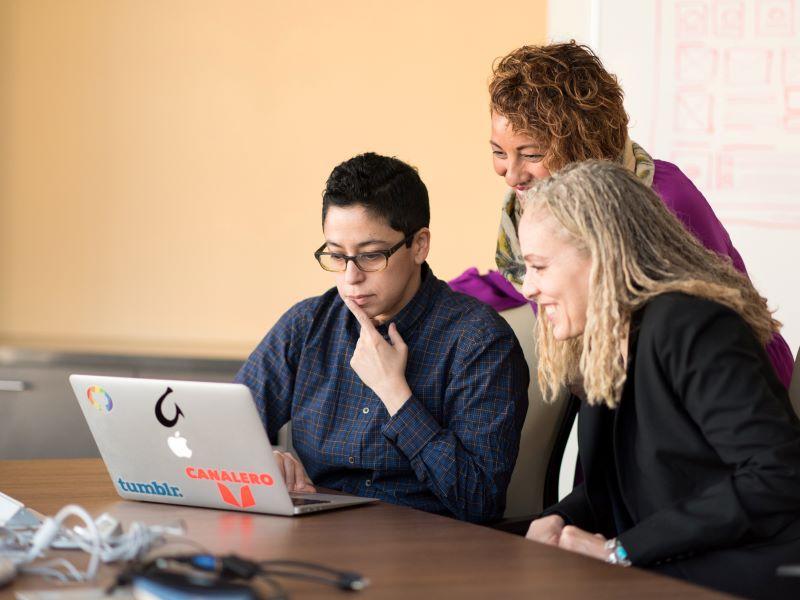
How to embed sustainability into different curricula
A framework to support sustainability education that works within different courses, with discipline-specific examples
You may also like
Popular resources
Many universities have committed to embedding sustainable development into student learning. This poses challenges for educators tasked with making this happen.
There are two pitfalls to avoid:
- “Bolt-on”: adding “one size fits all” generic sustainability content to all programmes.
- “Tick-box”: the mapping of how an existing curriculum touches on sustainable development themes, without engaging the actual learning experience of students.
Both can act as stepping stones. However, alone, they can feel inauthentic to students and staff involved. Instead, how can we provide education that demonstrates how the challenges of sustainable development are linked to the themes, interests, priorities and futures of the students and the discipline being studied?
Here, I share a framework for considering sustainable development at a disciplinary programme level. I offer questions to reflect on what content should be offered to students in that programme, and why. By exploring such questions, it becomes easier to justify what should be integrated in light of other curriculum and staff workload priorities.
Four motivations for engaging with sustainable development
I identify four (potentially overlapping) reasons why students studying a discipline might wish to learn about specific aspects of sustainable development:
- Risk
- Responsibility
- Opportunity
- Purpose
By reflecting on and discussing these motivations, and the reflective questions we offer, academics in various disciplines can explore what education for sustainable development content would be of most value to their students.
Risk
The world is changing as a consequence of the climate emergency and the challenges of sustainable development. These changes impact people’s lives and careers, with some pathways closing down and new ones opening up. They can also reshape academic disciplines. Our curricula need to ensure that our students are not left behind or unprepared for the future.
We must ask ourselves: How are expectations and requirements on graduates of our disciplines changing as a consequence of the education for sustainable development agenda? How might they change in the future? What understandings and practices will our students need to be prepared for this? Examples include:
- Mechanical engineers pursuing a future in vehicle design now need a solid understanding of electro-mechanical systems to meet employers’ needs
- Accounting and finance students increasingly need to understand debates and changing expectations around climate-related financial disclosures
- Humanities graduates who enter careers such as PR and advertising need to understand how to avoid unintentional greenwashing to avoid reputational damage.
Responsibility
Irrespective of their core interests, every student should be able to integrate sustainability considerations into their activities to “do less harm” environmentally and socially, and to understand the wider debates regarding responsibility that apply to their discipline.
We must think about what specific understandings and practices will allow our students to act in socially and environmentally responsible ways while on our degree courses. Examples include:
- Labs are often significant consumers of energy (for ventilation) and resources. Students who use them need to know how to mitigate this
- Field trips may take students to regions that have different cultural norms and values from their own. Students should understand something about these, and how to behave respectfully in these contexts.
In addition, what understandings and practices will allow our students to act in socially and environmentally responsible ways following graduation?
- Students studying geology and mining need an understanding of its social and ecological consequences and the ways these can be reduced. This should include questions of land rights in the Global South and post-colonial critiques of the behaviour of global mining companies
- Computer science students need an understanding of the energy use of algorithms, approaches to make them more energy efficient and how to design services to avoid unnecessary computation
- Health sciences students need an understanding of the diverse health needs in the Global South and how these are unmet through current practice. This can include an understanding of debates regarding the impact of patents on the availability and cost of drugs.
Opportunity
Some students are passionate about their discipline. Others are motivated by the career options it opens up for them. In both cases, the challenges of sustainability can provide an opportunity to satisfy their motivation. Disciplines, and the understandings and methodologies they provide, can help students understand challenges, develop responses to them and critique existing responses. How can we ensure that students are aware of these opportunities and that those who wish to are able to explore them further?
- Spotlight collection: a greener future for higher education
- A practical approach to tackling eco-anxiety
- Bring the SDGs into the classroom through role play and gamification
We must consider how our disciplines provide a deeper understanding of the nature of the challenges, their origins and potential impacts. For example:
- Biology can provide an understanding of the pressures on existing ecosystems, the damage they have already suffered and an assessment of which factors are likely to be most significant in the future
- Economics can provide insight into economic forces and policies as a driver of environmental degradation
- History can shine a light on past colonial injustices and extractive practices that have impoverished countries in the Global South.
In addition, we can consider how certain disciplines can evaluate and critique existing approaches. For example:
- Management science allows students to research the effectiveness, or otherwise, of companies placing social and environmental requirements on their supply chain
- Sociology can help students identify existing extractivist practices and mindsets in global initiatives
- Law can enable students to assess how effectively aspects of national and international law encourage, or hinder, a transition to a more sustainable society.
We can also consider how disciplines can offer potential ways forward. Examples include:
- Physics: developing more effective photovoltaic materials
- Geography: identifying changing climatic conditions to advise adaptation strategies
- Humanities: exploring “new stories” with regard to our relationship with the earth and each other
- Social science: highlighting questions of ecological justice and developing frameworks to ensure justice considerations are integrated into societal transition
- Biology: exploring ecosystem restoration and nature-based carbon sequestration approaches (including how to quantify them).
Purpose
Some students are motivated to make society more environmentally restorative and socially just. They see their discipline as a tool for this rather than an end in itself, and will be looking for understandings and expertise beyond it to allow them to be effective agents of change.
Such students are likely to be interested in more sustainability-focused content, more interdisciplinary content and deeper educational experiences that allow authentic learning regarding how groups of professionals and other parties engage with sustainability challenges beyond academia. For such students, interdisciplinary options sitting alongside their disciplinary studies are best suited to meet their needs.
Using the framework
This framework is best used during curriculum change or redesign. Discussions of these motivations and what they mean for the discipline should involve both teaching staff and students – and not just those who are more engaged with these issues. From this, teaching staff can develop options for content to be included to best meet these motivations, establish what the justification is and include these for consideration alongside other priorities within the curriculum. Content linked to risk and responsibility is likely to be relevant to all students, and so is best included in core teaching. Opportunities can be briefly highlighted in core teaching and explored in more depth in options for motivated students. In this way, education for sustainable development content can be integrated in a way that is appropriate for the discipline and motivation for both students and staff.
Chris Preist is the academic director of sustainability at the University of Bristol.
If you would like advice and insight from academics and university staff delivered direct to your inbox each week, sign up for the Campus newsletter.





Comments (0)
or in order to add a comment